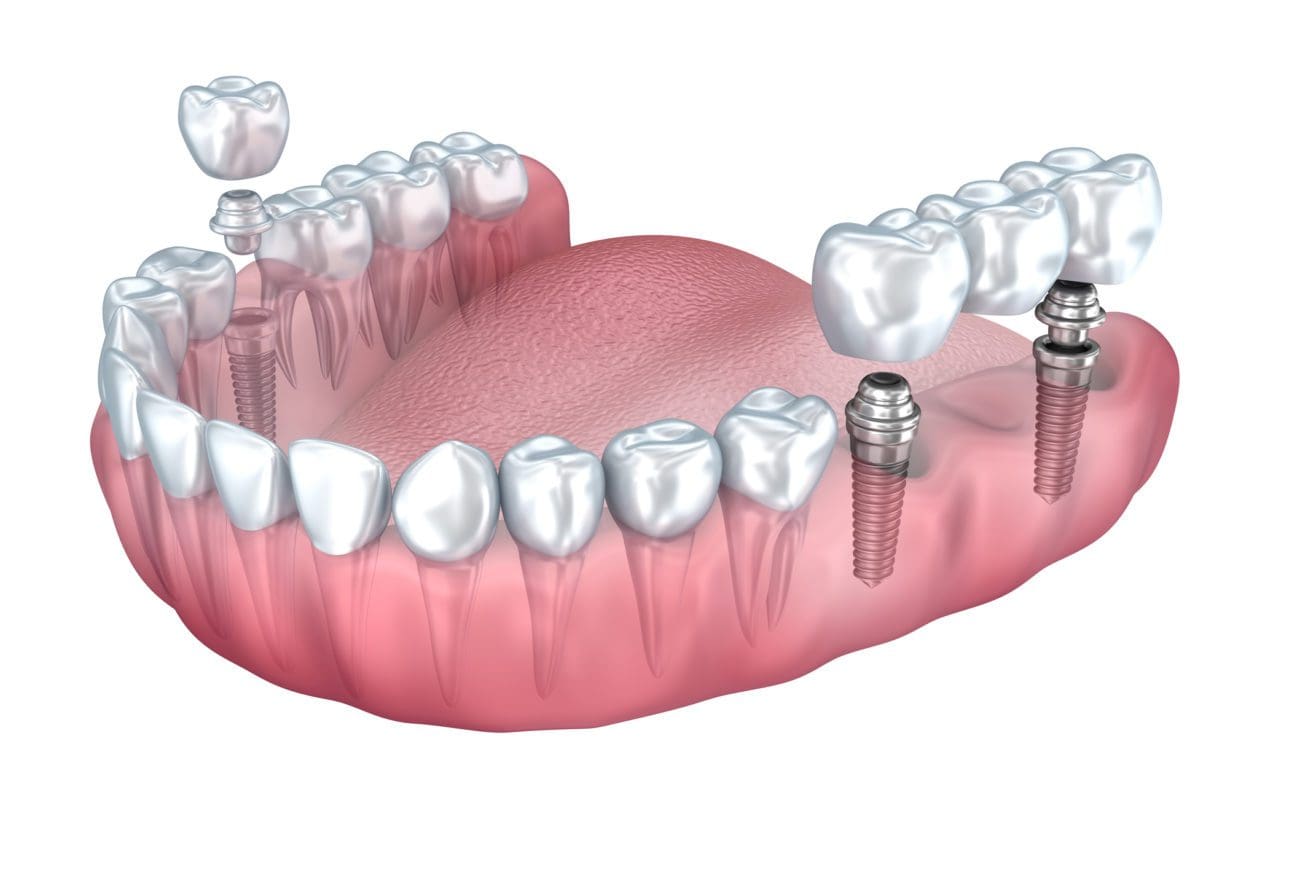Some Of Dental Sense
Some Of Dental Sense
Blog Article
Some Known Incorrect Statements About Dental Sense
Table of ContentsFascination About Dental SenseLittle Known Facts About Dental Sense.The Dental Sense StatementsFascination About Dental Sense
are medical tools surgically implanted right into the jaw to recover an individual's capacity to eat or their appearance. They provide support for fabricated (fake) teeth, such as crowns, bridges, or dentures. When a tooth is shed as a result of injury or disease, a person can experience complications such as quick bone loss, defective speech, or adjustments to chewing patterns that lead to pain.Dental implant systems include an oral implant body and oral implant abutment and might additionally consist of a joint addiction screw. Root canal procedure. The dental implant body is surgically placed in the jawbone instead of the tooth's origin. The dental implant joint is generally connected to the dental implant body by the joint fixation screw and expands with gums into the mouth to support the attached artificial teeth
(https://dentalsense1.bandcamp.com/album/dental-sense)Structure of The Oral Implant System choosing oral implants, speak to your oral company concerning the possible benefits and dangers, and whether you are a prospect for the procedure. Things to think about: Your total wellness is an important aspect in identifying whether you are an excellent candidate for dental implants, how much time it will certainly require to heal, and how much time the dental implant might remain in location.
Smoking cigarettes may impact the recovery procedure and reduce the lasting success of the implant. The recovery process for the dental implant body might take several months or longer, during which time you usually have a temporary joint in location of the tooth. the oral implant procedure: Thoroughly adhere to the oral health directions offered to you by your oral service provider.
6 Easy Facts About Dental Sense Shown
Implant failing can cause the demand for one more operation to fix or change the implant system. Restores the capability to chew Brings back cosmetic appearance Aids keep the jawbone from diminishing because of bone loss Preserves the wellness of the bordering bone and gums Assists maintain surrounding (nearby) teeth stable Boosts top quality of life Damages to bordering all-natural teeth during dental implant positioning Injury to the surrounding cells throughout surgery, such as sinus opening Injury throughout surgery (for instance, crack of surrounding jawbone) Inadequate function, such as seeming like the teeth do not attack with each other usually A sensation that the tooth hangs or twisting in position resulting from a joint screw loosening Implant body failing (looseness of the dental implant body) because of systemic infection, which may be more probable in clients with unrestrained diabetes due to neighborhood infection in bone and gum tissues sustaining the implant body as a result of delayed healing, which might be a lot more likely in patients who smoke Trouble cleansing the gums around the implant, leading to inadequate oral hygiene Unattended periodontal condition Post-surgical tingling because of nerve impingement or damages Constantly notify healthcare companies and imaging service technicians that you have oral implants before any magnetic resonance imaging (MRI) or x-ray treatments.
FDA is not familiar with any adverse occasions reported for MRI or x-ray treatments with dental implants. Oral implants systems are commonly made from products that comply with global consensus criteria of the International Company for Standardization (ISO) or ASTM International. These criteria have information of what makes a safe material.

An oral implant is a framework that changes a missing tooth. With screw-like devices, the cosmetic surgeon inserts an implant right into the jawbone, and it functions as a support for a synthetic tooth, called a crown. A tool called an abutment attaches the synthetic tooth to the oral implant. The crown is custom-made to fit the individual's mouth and match the shade of their teeth.
Unknown Facts About Dental Sense
Some individuals are not qualified for dental implant surgery. It is for dental doctors to operate on people with: severe illnessuncontrollable metabolic diseasebone or soft tissue illness or infectionIf these issues are dealt with, a person can have the surgical procedure. In, oral cosmetic surgeons avoid running on people with: If people with any of the above go through oral implant surgery, there is a greater danger of the implant stopping working.

Dental dental implant surgical treatment is an individualized process. It's not the same for every person. But the complying with gives a general introduction of what you can expect your dental expert, dental surgeon, periodontist or prosthodontist to do: Place the implant surgically. Give you time to heal. Attach the blog post and final crown, bridge or denture.
Next off, your surgeon will thoroughly position the oral implant right into your jaw. If your dental implant is near the front of your mouth, your dental expert will certainly make a momentary tooth for you to put on till you heal.
The Best Guide To Dental Sense
Your service provider can inform you what to expect in your circumstance. Throughout the recovery stage, your jawbone needs to fuse to the dental implant. This procedure, called osseointegration, is critical for stability and long-lasting success. This process can take anywhere from 3 to nine months. In many cases, it may take much longer.
When your dental implant heals, your dental practitioner can connect the joint (little adapter post) and your last restoration (crown, bridge or denture). This usually takes regarding one hour to finish and may need a second small surgical procedure. You shouldn't really feel any kind of discomfort during your dental implant procedure because your service provider will use medicine to numb your gums.
Report this page